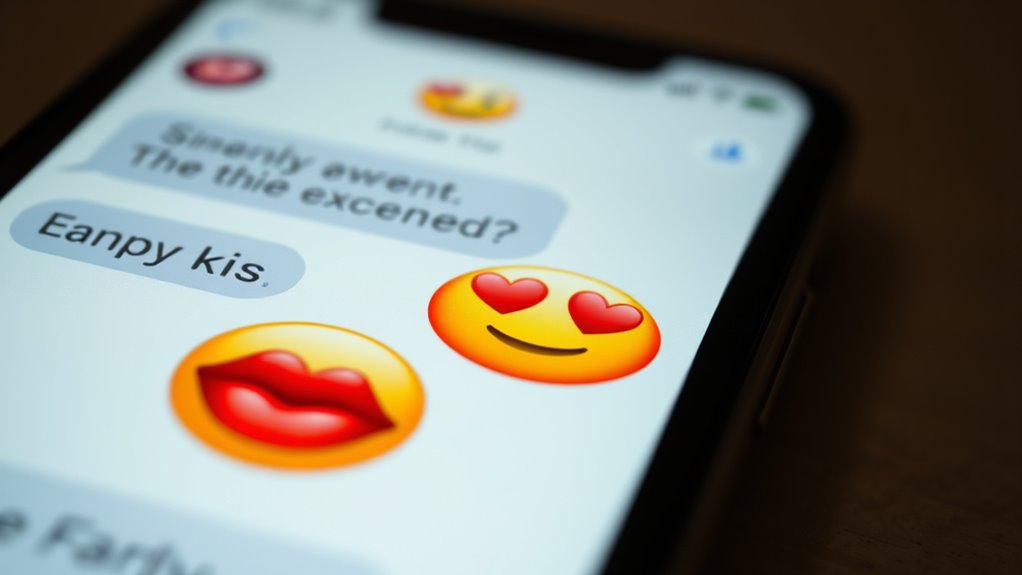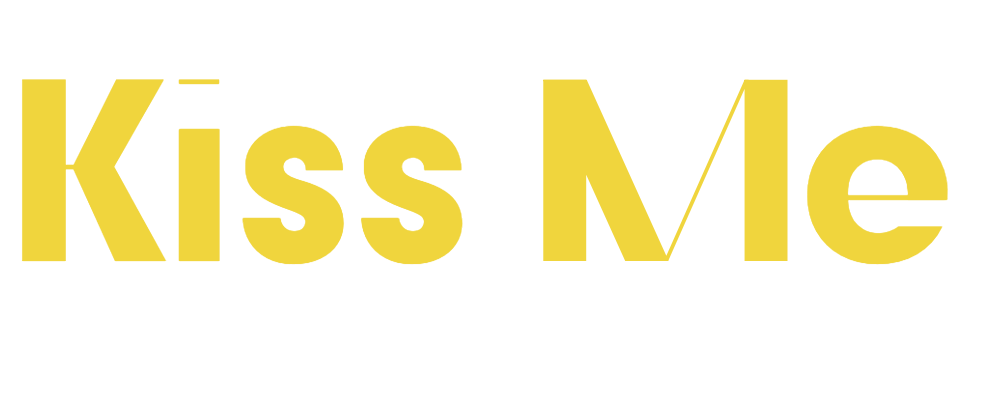Kiss emojis like 💋 and 😘 often lead to misunderstandings because their meanings vary across cultures and contexts. For example, in Western cultures, 💋 may suggest romance, while in other regions, it’s more casual or platonic. The😗 or 🤭 emojis can also be ambiguous, representing flirtation, affection, or friendliness depending on the situation. If you keep exploring, you’ll discover how to interpret these symbols accurately and avoid potential miscommunications.
Key Takeaways
- The 💋 emoji is often mistaken for romantic affection but can also signify friendship or appreciation depending on cultural context.
- 😘 (blowing a kiss) may be seen as flirtatious or playful, yet in some cultures, it’s a friendly gesture without romantic intent.
- Misinterpretations arise when professional conversations include kiss emojis, which might be viewed as inappropriate or overly personal.
- The meaning of kiss emojis varies widely across regions; understanding cultural nuances prevents misunderstandings.
- Staying mindful of context and relationship is essential, as emojis can convey different sentiments in personal versus formal communications.

Kiss emojis are a popular way to express affection, love, or flirtation in digital conversations. You might use them to show appreciation, send a playful message, or even flirt with someone you like. However, what these emojis actually mean can vary widely depending on cultural interpretations and how they’ve evolved over time. Understanding the emoji evolution can help you avoid misunderstandings and communicate more clearly in your digital interactions.
Kiss emojis convey affection and flirtation, but meanings vary across cultures and evolve over time.
The kiss emoji, especially the classic 💋, has gone through significant emoji evolution. Originally, emojis were simple icons meant to add emotion or context to text. Over time, the kiss emoji became a symbol of affection, but its interpretation isn’t universal. In some cultures, a kiss emoji might be seen as a sign of deep love or friendship, whereas in others, it might be interpreted as flirtation or even a casual gesture. This variation stems from cultural interpretations, which shape how people perceive certain symbols and gestures. For example, in Western cultures, a kiss emoji often signifies romantic interest or intimacy, while in Asian cultures, it might be used more lightheartedly or among close friends without romantic implications.
Because of these differences, you need to contemplate your audience when using kiss emojis. If you’re chatting with someone from a different cultural background, what seems like a harmless gesture might carry unexpected connotations. For instance, sending a 💋 to a colleague might be seen as overly personal or inappropriate in some workplaces, even if your intention is friendly. Conversely, in a personal conversation with a close friend or partner, the same emoji can convey warmth, love, or flirtation without ambiguity.
The evolution of emojis has also led to a richer variety of kiss-related icons. Besides the traditional 💋, you now have options like the 🤭 (face with hand over mouth) or 😘 (face blowing a kiss), each carrying nuanced meanings based on context. These variations highlight how emojis have become a language of their own, with meaning shifting based on cultural context and personal relationships. To avoid confusion, it’s best to be mindful of how the recipient might interpret your emoji—what’s playful or sweet to you might be misunderstood elsewhere. Additionally, understanding the cultural significance behind specific symbols can help you navigate these nuances more effectively.
In the end, understanding the cultural interpretations behind kiss emojis and their emoji evolution allows you to communicate more effectively. You can express affection or flirtation with confidence, knowing you’re not unintentionally sending the wrong message. Just remember to consider your audience, stay aware of cultural differences, and keep up with how emojis continue to evolve in this visual language we use every day.
Frequently Asked Questions
Are Kiss Emojis Appropriate in Professional Messages?
You might wonder if kiss emojis are appropriate in professional messages. Generally, they’re best reserved for platonic gestures or personal conversations, as they can carry romantic connotations that may be misunderstood. Using them in work emails or formal chats could send the wrong signal or seem unprofessional. To keep things clear and respectful, it’s wiser to avoid kiss emojis in professional settings and stick to more neutral expressions.
How Do Cultural Differences Affect Kiss Emoji Meanings?
You should consider how cultural nuances shape emoji interpretation because meanings can vary widely across cultures. In some places, a kiss emoji might symbolize affection or friendship, while in others, it could be seen as overly intimate or inappropriate. Being aware of these cultural differences helps you communicate effectively without causing misunderstandings. Always gauge your audience and context to verify your message aligns with their expectations and comfort levels regarding kiss emojis.
Can Kiss Emojis Replace Verbal Expressions of Affection?
You might wonder if kiss emojis can replace verbal expressions of affection. While they can convey friendly platonic gestures, they often carry romantic implications depending on context and relationship. Emojis add a visual layer of emotion, but they shouldn’t fully replace heartfelt words when you want to express genuine feelings. Use them to complement your words, ensuring your message matches your intent and avoids misunderstandings.
Are There Any Risks in Misinterpreting Kiss Emojis?
Misinterpreting kiss emojis is like reading a map upside down—you might head in the wrong direction. You should consider emoji appropriateness and cultural nuances, as they can vary widely. If you don’t, misunderstandings could lead to awkward or even hurtful situations. Always think about the context and the relationship before sending or interpreting kiss emojis, so your message stays clear and respectful.
How Have Kiss Emojis Evolved Over Social Media Platforms?
Kiss emojis have evolved considerably across social media platforms, reflecting platform-specific trends and user preferences. You’ll notice that on Instagram, they’re often used more playfully or flirtatiously, while on Twitter, they might convey affection or support. This emoji evolution shows how users adapt symbols for different contexts, making them more versatile. Staying aware of these changes helps you interpret and use kiss emojis appropriately, avoiding misunderstandings.
Conclusion
Now that you know the true meanings behind these kiss emojis, won’t you think twice before assuming what someone’s really saying? Emojis can be playful, romantic, or even friendly—it all depends on context. So next time you see a kiss emoji, ask yourself: is it just a friendly gesture or something more? Understanding their nuances helps you communicate clearer and avoid misunderstandings. After all, aren’t emojis meant to connect, not confuse?










